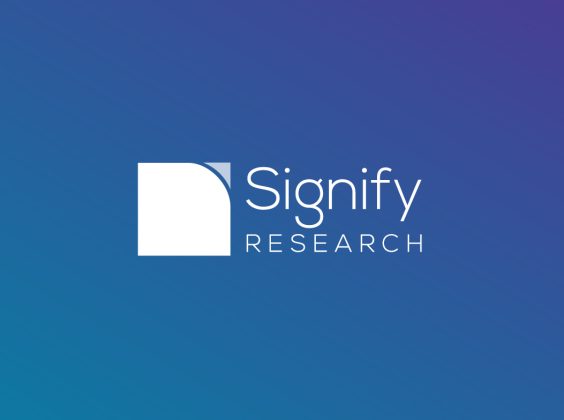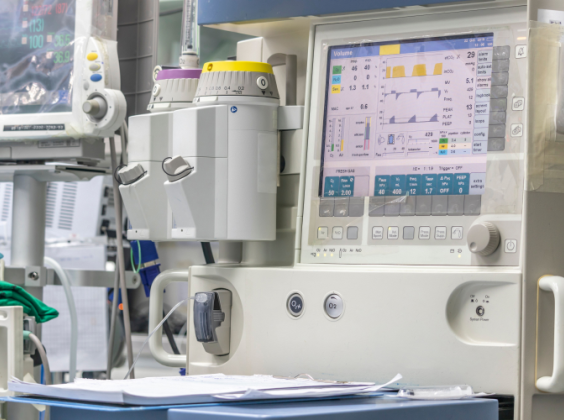
Written by

Cranfield, January 2023 – As the new year begins, the clinical care market and its vendors must prepare for the changes coming ahead. From recovery after the pandemic to the prioritisation of clinical efficiency and digitalisation, the market is looking towards technological advancement. Regulations and government initiatives are destined to impact the competitive landscape as manufacturers re-evaluate their market presence and product portfolios. Streamlining portfolios, reducing healthcare provision burden, and limiting costs are at the forefront of vendors’ minds. Asian manufacturers continue to gain more recognition whilst rising energy bills, inflation, and manufacturing costs continue to cause concern. This insight piece highlights the top five trends we predict for the year.
The clinical care space experienced drastic changes amidst the pandemic. Despite ventilator shortages and demand plummeting for devices required for elective and non-urgent treatment, the industry was quick to adapt and evolve to the needs of healthcare professionals. Now, three years later, product demand especially for ventilators and patient monitors, has almost fully recovered, and will continue to revert back close to 2019 revenues in 2023 as the market calms from the impact of COVID-19.
Figure 1. Projected market revenues segmented by product area
Despite the market levelling out as oversupply stocks in mature markets diminish and increased hospital utilisation begins to subside, the current economic climate is contributing to further changes in demand. Escalating energy bills and increased prices due to rising shipping and manufacturing costs will continue to be the theme of the year. These economic challenges have resulted in diversions in hospital spending and restricted budgets, impacting vendors, who are resorting to hiking up their prices to compensate for their lowering profit margins. Financial strain and its impact on healthcare resource and spending capacity is expected to create uncertainty in market growth, and concern over what can be expected in months to come.
Clinical workflow and cost efficiency of highest priority
Staff reductions and limited healthcare professional resource has been a growing concern, worsened by overstretched hospital capacity in the past years. As countries without adequate digital solutions struggled to deal with patient backlogs, and limited staff availability left patients with reduced quality of care, the importance of efficiency and prioritising clinical workflow was highlighted during the pandemic. As such, digitalisation of devices is now at the forefront of healthcare strategy and is a strong focus for 2023. The integration of digital solutions, simple dashboards, and AI-based analytics offer promise to healthcare providers to help optimise the care they deliver to patients. Simple dashboards will improve ease of use for clinicians, while the use of automated processes will reduce the time spent on clerical and administrative tasks, creating more time and energy for patient care, thus improving clinical efficiency. 2023 will continue to draw attention to new technological advancements that allow for improved efficiency and workflow.
Digital solutions will pave the way forward
The need for digital solutions to collect and analyse patient information was emphasised by the pandemic and is now widely regarded as vital for the quality of healthcare provision. Although the clinical care market has been slower in technological and digital progression when compared to medical imaging, acceptance and subsequent uptake of AI and analytical applications is expected to increase in the coming years, to further support clinical decision making. Interoperability maintains a key focus to allow for integration and two-way communication between devices. The utilisation of robotics in anaesthesia to facilitate automatic adjustment of parameters is just one example of the development expected to be seen within the clinical care space.
Signify expects that 2023 will see further growth of the AI and analytics-based applications, as the market approaches an estimated $1378m in 2023 from its 2020 global revenue of $78m. The presence of AI-based solutions with predictive algorithms will have the ability to provide second ‚Äòopinions’ on patient care and administration of treatment. Signify predicts that AI-based solutions with automated early warning systems will become more prevalent, increasing accuracy of patient deterioration flagging through real time analysis, while simultaneously reducing healthcare professional workload and improving clinical workflow.
Vendors will need to be on top of regulations
2023 will see an emergence of new local players as countries such as China, India and Brazil boost their economies through the enforcement of local-made initiatives. This is likely to result in a reshuffling of players within these regions as local manufacturers begin to monopolise their domestic markets. This has been seen in China, as Mindray and other local vendors continue to take market shares away from international competitors. While domestic suppliers in India do not yet have this same presence, their government regulations are paving the way for this to be the case. International vendors have begun to focus their attentions and efforts on collaborations with leading university hospitals to maintain a foothold in the market. Countries have now realised the importance of independence and self-reliance, boosting this drive for locally manufactured products; a trend that is expected to spread to other countries that currently rely on international vendors to supply their healthcare resources.
The implementation of the new Medical Device Regulations in the EU has already seen a shrinking of portfolios across both small and large companies, as vendors must determine which markets are economically viable for them. Innovation is expected to be hindered due to a reduced presence of smaller start-up companies, painting a bleak picture for the EU medical devices market, as less established vendors will refocus their attention on regions with fewer medical device compliances.
Competition will continue to intensify
Competition between vendors is expected to be on the rise as they streamline product portfolios due to the new MDR, Asian vendors gain share in both domestic and international regions, and manufacturers leave markets that they do not deem to be profitable. More established vendors are expected to monopolise the EU market and take on larger contract deals, at the expense of smaller suppliers with lower budgets available for costly regulatory processes.
Across the globe, Asian manufacturers have gained recognition for their lower cost, high quality products. The movement towards cost efficiency has indubitably highlighted this, with mid-range products being favoured over their higher-priced counterparts. The increased acceptance of lower cost solutions with comparable quality has driven uptake of devices from Asian manufacturers, such as Mindray, Aeonmed, Medcaptain, Comen and Edan Medical, who are increasingly gaining recognition as reliable and reputable vendors, and thus expanding their global presence. Most notably, Mindray, who has gained share globally and now holds a strong position in most market rankings, emphasises the shift in global perception of Asian manufacturers. This increased acceptance is likely to be rather fruitful for other Asian players looking to expand their presence off the tail of Mindray’s success.
Larger and more established companies have been hitting the headlines, such as Philips reporting staff reductions impacting their healthcare divisions and Medtronic spinning off their respiratory and patient monitoring segments. The clinical care space is therefore likely to undergo significant reshuffling of key players in each product area.
Recalls, mergers, and acquisitions are expected to be the theme of the year, with emergence of new players and intense competition amongst manufacturers to maintain and grow their market shares.
About Clinical Care
The clinical care team provides market intelligence and detailed insights on the clinical care equipment and IT markets. We cover patient monitoring, diagnostic cardiology, infusion pumps, ventilators, anaesthesia, and high-acuity IT. We offer a broad array of detailed market sizing reports, delivering our take on the key developments in each of the markets covered.
About Signify Research
Signify Research is an independent supplier of market intelligence and consultancy to the global healthcare technology industry. Our major coverage areas are Healthcare IT, Medical Imaging and Digital Health. Our clients include technology vendors, healthcare providers and payers, management consultants and investors. Signify Research is headquartered in Cranfield, UK. To find out more: enquiries@signifyresearch.net, T: +44 (0) 1234 986111, www.signifyresearch.net
More Information
To find out more:
E: enquiries@signifyresearch.net,
T: +44 (0) 1234 986111




